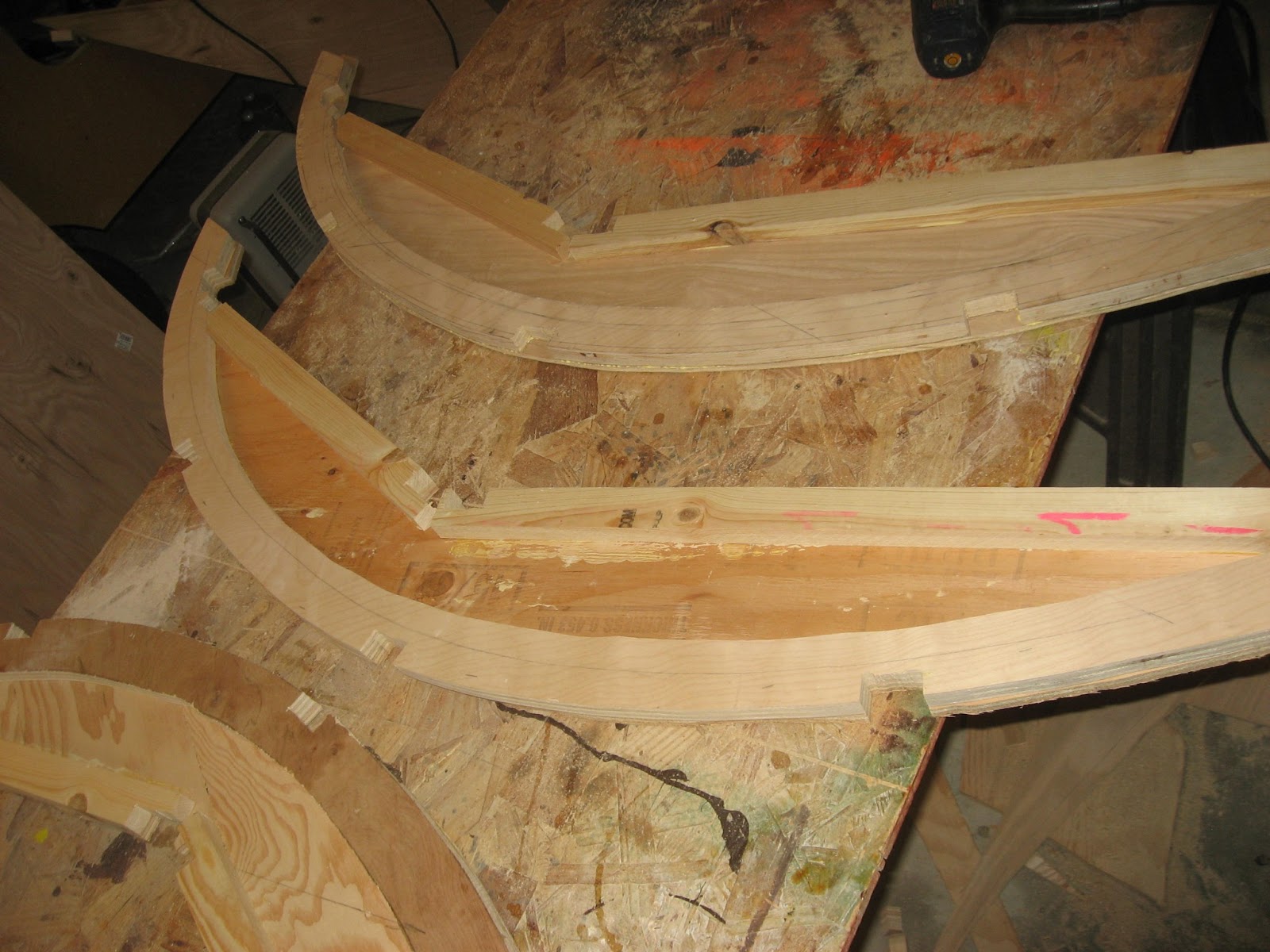

The Woodsman is finished! In this post I will walk through all of the finishing touches that have been completed since the last post. In the view above you can already see some of them. The entire exterior has been covered with fiberglass. I used 6oz cloth and 4 coats of UV inhibited RAKA epoxy. The sides have been given a coat of polyurethane varnish over the epoxy and the top has been given two coats of polyurethane paint over the epoxy. You have a pretty good view in these pics of the RV doors that I installed. I got these from the lil-Bear company. They were a bear to install (no pun intended) but once installed they are great doors. The most important thing is they have a good seal against rain but they also lock from the inside and out, the glass is tinted, and you can slide down a window pane to get some ventilation through a screeen. I also added some fenders. What you see here are flexy fenders. I got them from a local 4WD outfit. It's just a little rubber fender to keep the wheel splash off the side of the trailer. You cut them to length. The hatch weighed in at 65 lbs. It was kinda awkward to put up and down so I went with gas springs like a car hatchback has. Getting the right size and strength was a bit of a trick but eventually I ordered all the right parts from McMaster Carr and it's like magic now. You just get it started and then it lifts itself slowly to full open position.


The two pictures above are a little closer look at the galley. I searched and searched for a way to lock the drawers in placed during towing. Eventually I settled on these little bolts. Not very pretty but they will definitely do the job. When we are camped we will just unbolt them all and not bolt them again until we secure everything for the road.
Here's a closer look at the flexy fender. It is screwed from below. The pic on the right may be a little hard to see whats going on. I had built a 6 inch deep well in the floor with a lid thinking it would either be for storage or a foot well when seated on the bench. I always had in mind this table idea if I could find the hardware for it. I was in a trailer shop last week and there it was so I rigged up this little table. The table top is the cover for the well. It turned out pretty nice! So now when we're waiting out a rain storm we can listen to music and play a board game on the table.


This is a closeup of one of the draw latches used to keep the hatch tightly sealed. This is a stainless steel spring loaded draw latch from McMaster Carr. This one is made special for locking. I have three of these draw latches on each side. You can see them in the first pictures of this post. I crafted the aluminum straps that wrap around the hatch lid from 1/16 inch aluminum. There is one padlock on each side. They are paired so they open with a single key. The picture on the right is the shore power receptacle. This powers the battery charger/minder and the 110 V outlets in the galley and in the cabin.

Detail of the rear and the front. LED tail and signal lights from lil-Bear and in the center you see a lighted license plate holder from Amazon. In the front is a detail of the battery box and the trailer jack. The battery box is fastened down with 8 screws and washers and also strapped down with a nylon strap. It is not going anywhere.

I have one of these LED porch lights above each door, switched from inside. The vent is a standard camper vent with a three speeds for the fan motor.
There is still one thing left unfinished. The cushions/bed. I have five-inch thick poly foam ordered and last week I bought some upholstery fabric on clearance. I should have it done before the maiden trip on Memorial day weekend.


































